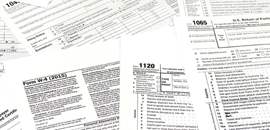- The rally in risk assets continued in the third quarter driven by expectations that near record low interest rates will continue for the foreseeable future. Market participants have done a better job forecasting the U.S. economy than Fed officials; however, U.S. bond yields are too low over the medium and longer term.
- Other developments that could impact markets in the remainder of this year and into 2017 include: (i) the disconnect between soft U.S. earnings and a rising stock market; (ii) the outcome of the U.S. Presidential election; and (iii) the fallout in Europe from Brexit and political and financial developments on the continent.
These developments leave us positioned neutral about interest rates in the near term but defensive over the long-term. We are maintaining an over-weight position in U.S. corporate credit, but recognize credit markets are closer to being fairly valued versus treasuries. Meanwhile, we remain cautious about the rally in equities continuing amid sluggish growth.
Risk Assets Continue to Rally
The momentum in favor of risk assets continued to build in the third quarter, as reflected in a strong showing for U.S. corporate bonds, equities, and emerging market debt and equity. In the United States, high yield bonds and equities led the way, posting returns of 5.6% and 3.8%, while emerging market equities and debt generated total returns in U.S. dollars of 9% and 4%, respectively. These gains boosted cumulative YTD returns for the Barclays Aggregate bond index and the S&P 500 index to 5.8% and 7.8%, respectively. Comparable returns for emerging market equity and debt indexes now stand at 17.2% and 14.8%, respectively.
This powerful rally in risk assets begs a key question — namely, what is driving it when the U.S. and global economy have been sluggish and U.S. corporate profits have declined for the past year and one half? The answer, in our view, is that investors effectively have re-priced corporate stocks and bonds: They effectively are extrapolating that the current environment of record low interest rates will persist for the foreseeable future.
We believe some of the re-pricing in risk assets is merited by the behavior of the Federal Reserve and other central banks, which continue to pursue low-interest rate policies. While Fed officials sent a strong warning to the markets that they were prepared to raise interest rates as early as September, they once again backed away when recent economic data turned out softer-than-expected. Nonetheless, the statement from the September FOMC meeting indicates that policymakers are open to raising interest rates later this year, with the most likely date being the December meeting.
Our view is the timing of any individual move is not as important as the glide path for future rate increases. On this score, there continues to be a wide gap between expectations of market participants, who foresee only a quarter percentage move each of the next two years versus those of Fed officials, who foresee interest rate increases of approximately two percentage points over the same period. We acknowledge the bond market has done a better job forecasting rates than the Fed in recent years, but we also believe it is too pessimistic about the long-term prospects for the U.S. economy and interest rates.
The Disconnect of the Stock Market & Earnings
One of the conundrums this year is that the stock market has posted a strong rally since mid-February even though U.S. corporate profits have been soft. Wall Street analysts began the year with an upbeat assessment for corporate profits, but they have had to revise their estimates down steadily during the course of the year. They are now calling for a mild decline in earnings for the third quarter, which would represent the sixth consecutive quarterly decline. Despite this, analysts remain optimistic that profits will rebound in the fourth quarter and continue to rise steadily in 2017.
Such forecasts in our view make little sense: They would require companies in the S&P 500 index to increase profits by 13%, something that hasn’t happened since 2011. According to Bloomberg, “Failure to do so would risk inflating equity valuations that at 20 times annual income are already the highest since the financial crisis.” (See “Earnings Miracle Needed to Get S&P 500 Values Out of the Cloud,” September 19, 2016.)
Some of the weakness in corporate profits has been tied to the steep decline in oil prices over the past two years, and the outlook for energy companies could improve if oil prices were to stabilize. Beyond that, corporate profit margins have begun to compress from record levels, a trend that would likely continue if interest rates were to rise materially. In that event, top line revenue growth would have to improve, yet there is little to indicate the U.S. economy is accelerating materially or that the dollar is weakening. Consequently, we believe the upside for the stock market is limited, although it may stay in positive territory as long as interest rates stay low.
Potential Impact of the U.S. Election
With the U.S. election now one month away and polls showing a close contest, investors will likely pay closer attention to the economic policies of the candidates. The prevailing view is that a Clinton win would likely have limited market impact, because her policies would represent incremental changes from those of the Obama Administration. By comparison, the outcome of a Trump victory is harder to assess, because his views have shifted over time and there is considerable uncertainty about whether policies he has championed during the campaign would in fact be implemented.
In many respects, the proposals Trump has put forth are reminiscent of the “supply-side” policies that President Reagan pursued in the 1980s. Trump’s primary goal is to revive the American economy and to restore long-term growth back to its former trend of 3.5%, while also creating 25 million jobs in the coming decade. To do so, he favors cutting tax rates for households and businesses and simplifying the tax code, while also lessening the regulatory burdens businesses face.
Both Trump and Clinton favor increasing spending on America’s infrastructure, and in addition Trump would boost military spending. The principal difference is that Clinton would tax the wealthy to pay for the increase in government spending, whereas Trump would cut taxes over the next decade by $4.4 trillion, which is down from an original estimate of $10 trillion. He claims the shortfall in revenues would amount to $2.6 trillion, assuming the economy grows at the projected rate of 3.5%. However, the likelihood is the deficits would prove to be much greater than the optimistic projections.
One implication for markets is that fiscal policy, which has taken the back seat to monetary policy throughout this decade, is likely to play a greater role in the future. If the budget deficit were to balloon, the Federal Reserve no longer would be compelled to buy unlimited quantities of government debt, and real interest rates would likely rise depending on the magnitude of the deficits.
The tricky call is how the dollar would fare if Trump were to win. During the Reagan era, the dollar soared as the combination of expansionary fiscal policy and tight monetary policy produced record high real interest rates that attracted foreign capital to the United States. If Trump were to pursue protectionist policies, however, the risk is that foreign governments would counter, and the dollar could come under pressure if foreign capital flows diminished. In this respect, the outcome under a Trump presidency could be very different from that of the Reagan era.
Europe: Back in the Soup?
Outside the United States, concerns about emerging economies, which had been hard hit in the past two years, have given way to newfound optimism, as worries about China and rising interest rates in the U.S. have faded. However, Europe once again has become a focal point in response to recent political and financial developments.
One of the main surprises this year was the decision by British voters to opt out of the European Union. This outcome triggered an initial steep drop in the value of the British pound and a sell-off in financial assets both in the UK and around the world. Soon after, however, markets rallied around the world, as the Federal Reserve refrained from tightening monetary policy, which the Bank of England and other central banks eased policies to lessen the risk of financial contagion. This strategy worked, as government bond yields plummeted around the world while risk assets rallied.
The prevailing view in the markets today is Brexit turned out to be a 'false alarm,' and that scare tactics by the British government proved to be unfounded. Our own view, however, is that the process whereby Britain exits the EU will be drawn out over several years, and it is too early to discern what the ultimate impact will be on the UK and the rest of Europe. Meanwhile, there will be several important elections in the continent over the next 12 months, beginning with a referendum in Italy that could determine the fate of the country’s reform-minded Prime Minister, Matteo Renzi. This will be followed by key elections in France, Holland, and Germany next year that could have an important bearing on the outcome of the European Union.
In the meantime, the health of the banking systems of Italy and Germany have been called into question, as the largest financial institutions in those countries are facing financial challenges that may ultimately warrant government support. While the problems individual institutions face are varied, one common element is evident—namely, European financial institutions are having a difficult time coping with an environment of negative interest rates.
Investment Implications: Reasons for Caution
In sum, risk assets in the U.S. and abroad have staged an impressive rally since mid-February, mainly on the back of diminished fears of Fed tightening and monetary policy easing elsewhere. However, underlying economic fundamentals have not improved in the U.S. and other developed economies, and emerging economies appear to be benefiting from a “relief rally.”
This situation could continue a while longer, especially if the Fed were to stay on hold and the U.S. election does not produce a surprise outcome. Over the long term, however, we believe U.S. bond yields are too low, and at some point risk assets could retrace some of their recent gains. Meanwhile, we continue to favor corporate bonds to treasuries on grounds that recession risks are low, although valuations are not as compelling as before due to the narrowing in credit spreads. We also remain cautious about the prospects for the U.S. stock market considering the lackluster outlook for corporate profits and stretched valuations in certain sectors of the market, especially ones that have benefited the most from low interest rates.



















